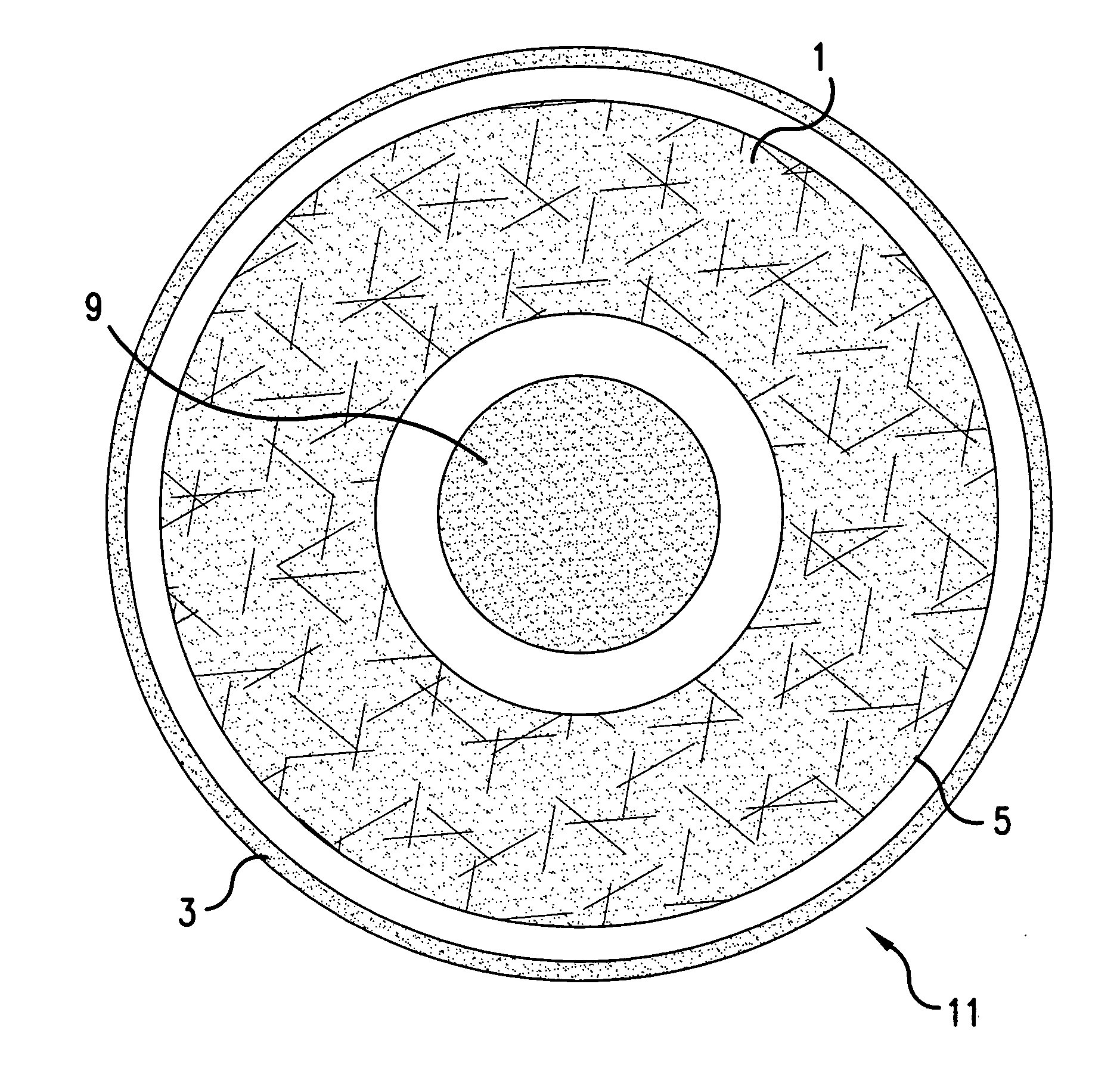Support structure for radiative heat transfer
a support structure and radiative heat transfer technology, applied in the direction of transportation and packaging, coatings, layered products, etc., can solve the problems of inability to achieve many applications successfully, additional correction cycles, affecting the cost and perhaps variability of friction performance of brakes, etc., to speed up chemical reactions, reduce the total number of cycles, and increase the effect of uniform weight pickup
- Summary
- Abstract
- Description
- Claims
- Application Information
AI Technical Summary
Benefits of technology
Problems solved by technology
Method used
Image
Examples
Embodiment Construction
[0022] One embodiment of the present invention is a method for densifying a porous carbon preform. The method includes the steps of: providing an apparatus charged with at least one stack of annular porous carbon-carbon composite preforms, the preforms being separated from one another by spacers emanating from a passive heat distribution element centrally located within a cylindrical space formed by the stack of annular preforms; locating the charged apparatus in a furnace at a temperature in the range of 950-1100° C. and a pressure in the range of 5-40 torr; and circulating a carbon-containing gas reactant through the apparatus for from 150 to 900 hours. In accordance with the present invention, the preforms are densified with less than 1% total physical damage due to the weight of the preforms being treated than are a batch of preforms made by an otherwise identical process that does not separate preforms from the preforms immediately above and below them by spacer elements compri...
PUM
| Property | Measurement | Unit |
|---|---|---|
| pressure | aaaaa | aaaaa |
| temperature | aaaaa | aaaaa |
| mass | aaaaa | aaaaa |
Abstract
Description
Claims
Application Information
 Login to View More
Login to View More - R&D
- Intellectual Property
- Life Sciences
- Materials
- Tech Scout
- Unparalleled Data Quality
- Higher Quality Content
- 60% Fewer Hallucinations
Browse by: Latest US Patents, China's latest patents, Technical Efficacy Thesaurus, Application Domain, Technology Topic, Popular Technical Reports.
© 2025 PatSnap. All rights reserved.Legal|Privacy policy|Modern Slavery Act Transparency Statement|Sitemap|About US| Contact US: help@patsnap.com



